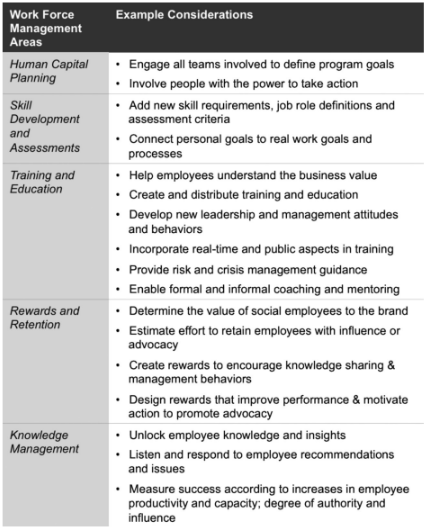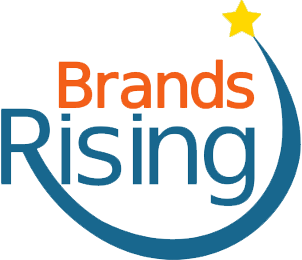Many brands avoid empowering their employees in social media because they do not want to dis-intermediate the marketing team from customers, or they do not want employees creating brand assets that the brand does not own. Some brands fear that employees in social media could damage brand reputation or violate regulations and create liability for the brand. Some brands just do not know how to begin.
“My team hears from other groups every day, looking for advice about where to begin,” Ethan McCarty, founder and CEO of Integral Communications Group, shared with me during his time at IBM. “The most common questions start with ‘are we allowed to’, or, ‘can you point us to a good example’—which led to our choice to post our social computing guidelines publicly and regularly publish stories about social media successes on our intranet and our external websites.”
Regardless of how a brand feels about its employees in social media, nearly every brand has employees who are active on social media and employees who talk about their brand on social media. Those employees engage in social media for a wide range of reasons. In many cases, employees get into social media because their partners and customers demand it.
Why You Must Help Your People
As one example, 3M structured employee empowerment at the corporate level in response to clear demand from their partners and customers. Greg Gerik, who was a global social media leader at 3M, shared with me during a personal interview , “[O]ur partners and customers look for 3M employees to be socially engaged. Before we had formal processes and training, our teams naturally found a way on their own.”
While almost every brand today can find employees using social media to discuss their products, services, working conditions, and so on, the brands that achieve the most value deploy corporate resources to empower their employees in social media.
Simply asking employees to parrot brand-generated messages through their personal social media may help the brand to gain small amounts of reach or engagement, but it is not a sustainable strategy for engaging audiences and developing relationships online. It is easy to do, so a lot of brands do it; however, that approach fails to respect the relationships between employees and their audiences, so it does nothing to help employees create a differentiated and effective presence online.
Specifically, when people simply repeat brand-generated messages, they lose the ability to attract people like me, thereby diminishing their ability to build trust and advocacy online.
As stated by Jon Iwata, former Chief Brand Officer at IBM, “Some forward-thinking companies . . . are providing the training, tools and encouragement to make their employees expert at using social media. In doing so they are creating a competitive advantage.”
In general, the greatest potential value of socially empowered employees can be achieved only when the brand aligns employee activities in social media with brand goals. And you should do so across the organization. As stated by Danna Vetter, Vice President of Consumer Marketing Strategy at ARAMARK:
Each of our businesses that are active on social has different strategies to meet their business needs. So the metrics we use to determine success vary by strategy. We expect employees to set goals and objectives to meet their business’ needs, just like they would in any marketing campaign. Our job is to give them the opportunity to be successful and provide them the tools
From personal interview with Danna Vetter
that allow them to be.
Brands that build the competitive advantages of socially engaged employees quickly encounter a host of internal and external challenges, including potential conflict between brand goals and the employees’ personal goals for their own professional reputations. Often, those two sets of goals may not align completely, and it takes some effort for the brand to keep it all working together.
Alexandra Samuel has referred to socially engaged employees who build a personal reputation as “co-branded,” and observed that:
Co-branded employees may exist largely below the radar now, but that’s changing fast, and employers need to start preparing for the ever-greater challenges they pose for managers, co-workers and companies. Their activities can either complement a company’s own brand image or clash with it. Companies that fail to make room for co-branded employees—or worse yet, embrace them without thinking through the implications—risk alienating or losing their best employees, or confusing or even burning their corporate brand.
Your Employee Is an Online Celebrity. Now What Do You Do?
Ultimately, brands need to respect the employee’s desire to develop their own reputation—or the reputation that the employee may already have—because the greatest impact occurs when both the brand and the employee understand and integrate each other’s strategies and plans.
Consider these questions when determining the how best to approach employee engagement in social for your brand:
- How do we manage potential differences between each employee’s personal brand the organization’s brand?
- How should managers balance responsibilities among socially engaged employees and those who are not—for example, bloggers and non-bloggers within a team?
- How do we protect confidential, proprietary, and customer information?
- To what extent should we support or encourage social publishing during work hours?
- Can or should we make social engagement mandatory for some roles?
- How do we ensure that people who contribute to content receive proper credit?
- What is a social media presence worth, and how should we reward or compensate employees who achieve the goals that we define?
- If an employee creates a new digital asset that portrays the brand, who owns that digital asset?
- How should our policies change to protect the brand and employees?
Some of the impacts on workforce management, also often called human capital management, which an organization should anticipate when empowering employees in social media, are summarized here:

In order to ensure that you properly align a social employee empowerment program with brand goals, you should engage the business units and functional teams whose employees you will empower and whose business goals you will support. You will achieve value for your organization to the extent that you connect employee empowerment with real work goals, business processes, and outcomes that the business wants to achieve.
“For our team, this means using social media to make our departmental goals and our managers’ annual goals explicit to the whole company,” said Ethan McCarty, IBM’s Director of Social Strategy and Platforms. “For example, we post sample goals in our on-line community for our team to customize. And the managers on our team publicly post their personal business commitments to create transparency and clarity across the department.”
Especially engage the people in those teams who have the power to help you take action regarding the goals of your social employee empowerment program. Chapter 8, Build Your Team, of my book The Most Powerful Brand on Earth,provides ways that you can engage leaders across your organization to build support and engagement in your program.
